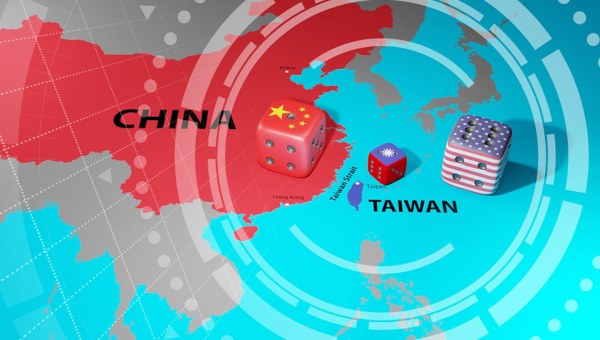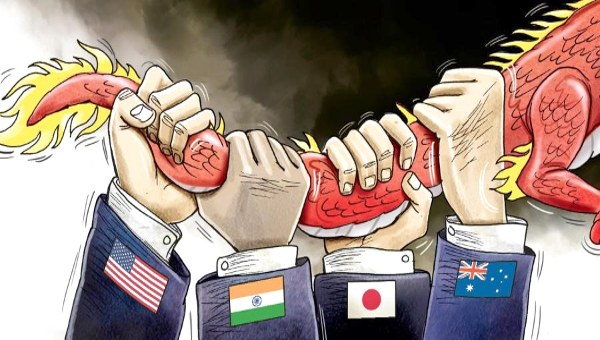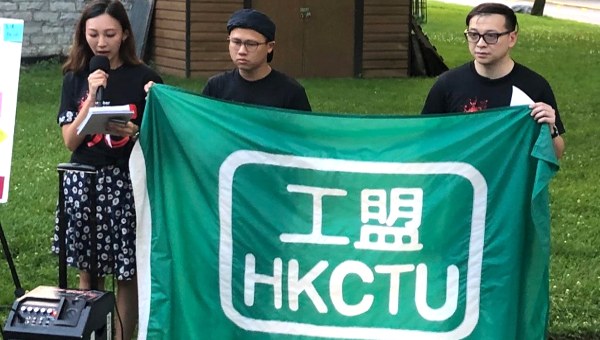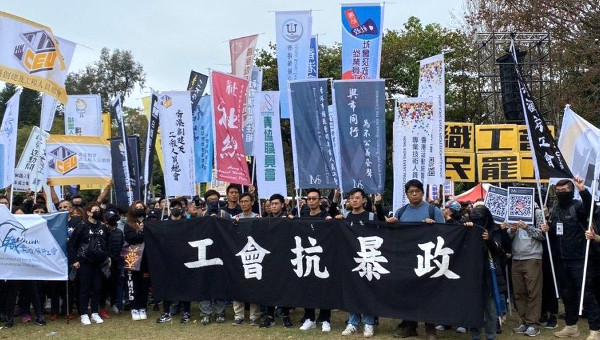China and the World Market: Thirty Years of the ‘Reform’ Policy
It is now thirty years since the People’s Republic of China announced its market reform policy at the Third Plenum of the 11th Central Committee of the Chinese Communist Party (CCP) in December 1978, under the then new leadership of Deng Xiaoping. The policy followed the death of Mao Zedong in 1976 and the purging of ‘leftists’ in the Party and the state, symbolically represented by the trial of the ‘Gang of Four.’ The policy was the declaration of the end of ‘Maoism’ as the economic and political framework for the Chinese revolution, although Maoism has continued to endure as a source of ideological legitimacy for the CCP.

At the Third Plenum, the Central Committee declared an end to class struggle of a “mass” kind and a focus of “Party work on socialist modernization.” This was to be accomplished by combining “adjustment by the market” with “adjustment by the plan.” It meant introducing market reforms and disciplines into collectivist agriculture in the countryside and state-owned enterprises (SOEs) in the cities. It was tied to the ‘open-door’ policy of 1979 to increase flows of foreign trade and finance, the development of special economic zones for unfettered capitalist factories utilizing cheap, and most often female and migrant, labour close to Hong Kong and Taiwan in Guangdong and Fujian provinces, and the formalizing of diplomatic relations with the USA. The opening of the collectivist economy to market forces inside China and integration into the world market was to be via the guidance of the CCP and without political democratization. China’s market-opening policies of 1978, in this wider sense, remain the guiding policy for China and the CCP. The Deng leadership would term this policy ‘socialism with Chinese characteristics.’ It would actually mark the transition to capitalism in China.
The Chinese Revolution
The Chinese Revolution of 1949 was led by the CCP, under the leadership of Mao, and emerged out of a confluence of war, internal political collapse, and peasant rebellion. Not the least of these was the subordination of China in the world market, and more than a century of humiliation by colonial domination, the division of China by the imperialist powers, and ineffective opposition by despotic emperors and the dictatorship of Chiang Kai-Shek. The revolutionary government inherited a deeply backward feudal economy, with only enclaves of capitalist markets largely dominated by foreign capital, and a bureaucratic state directed at extracting as much of the economic surplus out of the peasantry as possible.
The core of the Chinese development strategy was similar to the Soviet economies: the means of production nationalized as state property; central command planning; building up of heavy industry; protective security without political rights for workers and peasants; suppression of the consumption levels of workers and peasants to maximise the potential economic surplus; and conversion of the surplus into high rates of investment in infrastructure and industry. With its enormous peasant population, agricultural collectivization and a village commune system also became a central component of Chinese development.
As with other revolutionary regimes, the imperialist powers broke trade linkages and isolated China from the world market. Great political campaigns and social upheavals over how to drag China out of its isolation and backwardness, configured as a debate between ‘leftists’ and ‘capitalist roaders’, ensued. The first decade of the revolution brought land reforms, nationalization of foreign capital, collectivization and the first five year plan. The ‘Great Leap Forward’ of 1958-60 attempted to use mass political mobilization to advance self-reliant productive capacity via the expansion of the village commune system. The ‘new economic policy’ and the ‘Four Modernizations’ that followed increased the space for market activity, and adopted a technocratic model of central administration with a focus on science and technology. This strategy was disrupted by Mao’s last political campaign, the ‘Cultural Revolution’ from 1966-69, to deepen collectivism and root out bureaucratic conservatism, before slowly emerging again in the 1970s in the internal CCP political struggles that preceded Mao’s death.
It is hard to dispute the accomplishments of the first decades of the revolution for Chinese modernization. From the 1950s to the mid-1970s, average industrial output grew by about 11 percent a year and built productive capacity across virtually all sectors. Mass famines (except for the period of the Great Leap Forward) and pestilence were wiped out; medical services for the masses meant infant mortality rates and life expectancy advanced ahead of all other low income countries; mass education was provided for all, with many peasants even gaining access to university education; efforts at “equalising” social relations in all spheres were undertaken; and the ‘iron rice bowl’ provided social security for all Chinese people. Two areas, however, lagged in performance: food production consistently grew but only doubled its output in this period and just matched population growth, barely raising peasants’ money incomes; and consumer goods production grew at only half the pace of heavy industry.
Market Policies Since 1978
The political failings of the Cultural Revolution provided the space for the return of the “Four Modernizations” policy in the 1970s and eventually the market-opening policies of 1978 noted above. These policies, in turn, generated additional market building policies. In the initial period of 1978-83, the SOEs were given greater enterprise autonomy, including over employment terms for workers, sales of goods once planning targets were met, and control over the re-investment of earnings. Small enterprises were allowed, with limits on the number of employees abolished in 1987; they grew from a few hundred to over 4 million by the mid-1980s. Collective enterprises were also greatly expanded. In 1980, the de-collectivization of agriculture began with almost all peasants becoming dependent on the market for sale of their produce under the household responsibility system. The Maoist commune structures were replaced in 1982 by the Township and Village Enterprises (TVEs). By the early 1990s, these locally-based market enterprises numbered 25 million and employed 125 million workers.
The Third Plenum of the 12th Congress of the CCP in 1984 endorsed the notion of a “planned commodity economy.” SOEs were to finance more of their own operations and subjected to profitability criterion; TVEs were given increased autonomy to respond to market forces. A process of price reforms was started to move away from state-set prices to market pricing. Reforms were also begun to universalize the commodification of labour in the state sector that was already occurring in the private sector and in the special economic zones. Enterprise rights to set contracts were expanded, and new workers hired would not be subject to social protections such as healthcare, pensions, and job security. In 1987, the CCP announced a policy to develop an “export-oriented economy.” This further expanded the special zones to encompass almost all the coastal area, formalised that foreign investors would no longer be required to seek out joint ventures, and promoted even more tax and regulatory breaks for foreign capital. In the decade from 1978 to 1988, foreign trade quadrupled as foreign capital poured in and Chinese export capacity increased.
The 14th Congress of the CCP in 1992 committed to a “socialist market economy.” The slogan represented a final push by the Deng leadership to consolidate the development of capitalism in China. The mass privatization of SOEs took numerous forms, including the sale of shares on the newly opened stock exchange in Shanghai. Former managers, party cadres, and connected CCP family members turned themselves into capitalist entrepreneurs by seizing SOE assets, more often than not by various means of corruption. This was also the case for the TVEs in the countryside. From providing about half of manufacturing employment in 1978, SOEs had only 15 percent in 2001. The 1994 labour law reforms for SOEs generalized the contractual status of wage-labour and further “smashed the iron rice bowl.”
The 16th Party Congress in 2002 adopted the strategy of the “Three Represents,” which included representing the most advanced productive forces. Capitalists were thus welcomed to join the CCP; a policy to attach party committees to private companies logically followed.
The Imbalances of Chinese Capitalism
The thirty years of market reforms have brought immense changes to China’s place in the world market. The reforms evolved through a cycle of extraordinary booms followed by slowdowns to contain inflationary pressures. Severe imbalances remain characteristic of China’s capitalist model of development.
Since abandoning the collectivist policies of the Maoist period, China has pursued high growth at all costs, with Deng and his successors ridiculing any efforts to lower the growth rate to meet social or ecological needs. This has sustained Chinese growth rates at over 10 percent per year since 1978. China will soon be the second largest economy in the world, and is steadily closing the gap with the USA. On a per capita GDP basis, however, China remains a poor country at about $2800 (U.S.).
The growth of trade and exports has been an important component driving economic growth. The share of exports in China’s GDP in 1978 was under 5 percent. It had grown to about 25 percent when China entered the World Trade Organization in 2001, and now stands at about 35 percent. China will soon be the word’s largest trading nation. This growth is becoming somewhat less dependent upon exports to the U.S. as trade to the rest of Asia in particular grows, and China’s internal investment and home market increases in size.
However, export-led growth remains critical with the current account monthly surplus is estimated to be running about $25 billion and 12 percent of GDP for 2008. As a result of this long period of trade surpluses, China is now holding about $1.5 trillion in foreign exchange reserves, largely in U.S. dollars. The forex holdings partly arise from the effort to keep the renminbi at highly competitive exchange rates to sustain export-led growth. On the one hand, this adds to inflationary pressures particularly evident in the run-up in stock and real estate values. The large holdings of U.S. dollar-based assets by the Chinese central bank are also subject to losses from both low returns and the slide in the value of the U.S. dollar. On the other hand, the foreign reserves provide a platform for the internationalization of Chinese capital. Chinese private capital and state agencies, for example, have taken equity positions in Barclay’s, Citibank, Bear Stearns, and others. And Chinese capital is actively engaged in an acquisitions surge around the world.
From the outset, foreign capital exploiting Chinese labour has been integral to the growth in trade and the market reforms. China is the largest recipient of foreign direct investment in the world, with estimates of half of Chinese trade occurring in foreign enterprises in 2001, and accounting for just under 10 percent of gross capital formation since 1978. The export sector has been crucial to multiplying the supply and commercial commodity chains into new industrial regions extending beyond the huge coastal cities.
The external imbalances speak directly to the internal imbalances of China’s capitalist growth processes. This has been growing through time as consumption and incomes in China have been growing more slowly than rates of growth in investment and exports. While many Chinese have moved out of poverty and found work in formal employment, the conditions for the estimated 350 million Chinese waged workers remain difficult. Most estimates put the average manufacturing wage at well under $1 per hour, and an average workday of 11 hours (and 6 to 7 days a week). In the special economic zones, conditions are often worse. Irregular employment now claims more than one-third of urban work, and official open unemployment is now at about 10 percent. Surplus value is being extracted from Chinese workers, especially female and migrant workers, at exceedingly high rates of exploitation.
In rural areas, de-collectivization initially raised incomes from increased land utilization and government price supports. Some peasants have continued to prosper. But most have remained impoverished as low prices, soil depletion, and tiny plots have left incomes stagnant for more than two decades. In many areas, privatization has also ended access to health services and even education for many peasant households. Of the one in four Chinese estimated to still be living on $1 U.S. per day, most are in the countryside. This is fuelling perhaps the greatest migration in world history, particularly of women, into the cities. In Beijing, for example, 4 million of the 20 million in the greater urban area are said to be migrant workers, many lacking protections at work and access to social services.
The reckless pursuit of high growth has also caused huge ecological imbalances. Enormous damage has been done to China’s magnificent river system from dumping by factories. The drive for foreign capital all costs has turned some of the coastal areas into a dumpsite for the world’s toxic wastes. With the massive growth in energy demand and reliance on fossil fuels and coal, China is now the world’s largest emitter of greenhouse gases. Air quality is also suffering, with many thousands dieing prematurely as a result. China’s environmental laws are formally no different from some of the best world standards. But the pressures of market driven growth and official corruption has left them not enforced.
Chinese Socialism Renewed?
China is now securely integrated into the circuits of capital as one of the dominant poles of world accumulation. The CCP, with its some 74 million members, has remained in control of this process, neither repudiating the revolution nor socialism as the basis for its ideological legitimacy. As with Deng’s initial turn to “market socialism” in 1978, the recent policy for a “harmonious society” of the current Hu Jintao and Wen Jiabao leadership, as stated at the National People’s Congress in 2005 and during the 17th CCP Congress in October 2007, was put forward within these terms. This is the contradiction at the centre of the evolution of the market reform policy: the CCP set in motion, directly and indirectly, the social forces and market imperatives leading to the development of capitalism in China in the name of building socialism.
The legitimation of market liberalisation in terms of socialist and Maoist thought has, paradoxically, served as a means “de-ideologize” the process and “depoliticize” Chinese society. Although authoritarian measures to put-down with force democratic uprisings have been regularly deployed, such as against the Democracy Movement of the late 1970s and at Tiananmen Square in 1989, or against worker and peasant demonstrations, the party-state has been most effective in maintaining its ideological legitimacy as defender of the revolution and the nation.
The space for political struggle that might create an alternate trajectory for Chinese development has thus been powerfully contained. A measure of civil activism and liberalisation, partly pushed by the new urban middle class for increased accountability and participation, and partly by peasants and villagers fighting for their rights, has been channelled through the party and state apparatuses. This has been the case, for example, with many ecological and anti-corruption campaigns. The some seventy to eighty thousand incidents of protests, illegal strikes and civil unrest reported to be occurring annually across China now, however, speak to deeper conflicts that the existing state and development model have not been able to absorb. These include the large numbers of protests by peasants fighting for their land tenure rights and workers, particularly female and migrant workers, struggling for their organizational rights and against exploitation in the capitalist factories and construction sites of the coastal cities.
The civil unrest has had difficulty moving from spontaneous resistances to organized anti-capitalist protest. Some support for these protests may be found in the “old left” in the All-China Federation of Trade Unions (ACFTU) and the CCP who remain committed to the original values of the revolution. However, these are now marginal currents in formal party-state institutions. Some “Maoists” also maintain a base amongst peasants and workers. But the protests and strikes occur in relative isolation, linked only by minimal means of communication. The protests also remain, at this point, largely separated from a significant “new left” forming in intellectual, student and other circles in the urban centres and universities. The formation of connections across these locations is where an alternate development trajectory for China most likely resides. As the Hu and Wen project for a “harmonious society” falters in addressing the imbalances of China’s market-driven development model in the next years (and the many unaddressed internal national issues in Tibet and other territories continue to fester), the protests and connections are apt to grow. For Chinese workers and peasants, this is the political space in the making for the renewal of Chinese socialism. •





